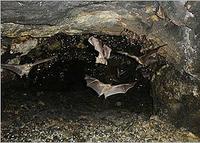-
Amid controversy, Boston City council debates banning Level 4 Biolab
Boston has long been seen as “America’s Medical Capital,” but that may soon change if the city passes a measure to ban Level 4 Biolab disease research at Boston University’s National Emerging Infectious Diseases Laboratory – research which includes deadly and untreatable strains that could decimate an exposed urban population in the event of an accident or terrorist activity.
-
-
Pocket-sized anthrax detector aids global agriculture
Bacillus anthracis, the bacteria that causes anthrax, is commonly found in soils all over the world and can cause serious, and often fatal, illness in both humans and animals. The bacteria can survive in harsh conditions for decades. In humans, exposure to B. anthracis may occur through skin contact, inhalation of spores or eating contaminated meat. A credit-card-sized anthrax detection cartridge developed at Sandia National Laboratories and recently licensed to a small business makes testing safer, easier, faster, and cheaper.
-
-
Identifying the most likely non-state chem-bio threats
New research finds that Jihadists pose the most likely chem-bio threat, but other actors also featured as top threats. Jihadist actors occupied seven of the top 10 spots in a qualitative analysis; nine of the top 10 in a quantitative analysis; and half of the top 10 in an elicitation analysis.
-
-
2014 edition of updated first responder biodetection technology guide available
A 2014 update to a detailed product guide listing biodetection technologies and sampling products is now available. The updated digest, Biodetection Technologies for First Responders: 2014, provides a comprehensive compilation of commercially available detection devices and products published to help first responders when purchasing equipment and supplies needed to rapidly assess biological threats.
-
-
Food-related disease outbreaks can teach us about the consequence of food terrorism
Since unintentional food-related outbreaks have become so common, policy makers could use data from unintended foodborne disease outbreaks to estimate the effects of intended foodborne disease outbreaks. The impact on trade and economies is the primary motive for food terrorism, according to the World Health Organization (WHO), but beyond the financial loss, such intended foodborne disease outbreaks may even impact political stability.
-
-
Positive results reported from single dose anthrax vaccine studies

Immunovaccine and Pfenex announced positive results from anthrax challenge studies in rabbits using Pfenex’s mutant recombinant Protective Antigen (mrPA) formulated with Immunovaccine’s DepoVax delivery system. Data demonstrates 100 percent protection against a lethal anthrax challenge in animals after vaccination with as little as 0.33 microgram of mutant recombinant Protective Antigen. Dose response observed in the first twenty-eight days following vaccination.
-
-
Scientists learn how Marburg virus grows in cells

Infections with Marburg virus lead to death in as many as 90 percent of those infected. Once restricted to Africa, cases of the virus have been identified in travelers from Europe and the United States, making effective prevention and treatment a top biodefense priority. Study suggests targeting molecular interaction of virus and host protein may arrest this lethal virus.
-
-
Synthetic biology makes bioweapons easier to make
Scientists and policy makers are no longer unconditionally promoting scientific innovation for fear that current and future biological breakthroughs may lead to dangerous applications. Traditionally, government-backed institutions and pharmaceutical firms fueled biological innovation, but today, the barriers that limited innovation to those institutions are diminishing. The low cost and significantly reduced level of necessary expertise have provided anyone interested in developing biological technology the tools to do so. Synthetic biology, the design and engineering of biological devices and systems, has given terrorists the capability to launch attacks using synthetic organisms without detection.
-
-
Faster anthrax detection could speed bioterror response
The fall 2011 anthrax attacks cost $3.2 million in cleanup and decontamination. At the time, no testing system was in place that officials could use to screen the letters. Currently, first responders have tests that can provide a screen for dangerous materials in about 24-48 hours. Now, researchers have developed a new method for anthrax detection that can identify anthrax in only a few hours.
-
-
Positive safety results Marburg drug candidate announced
Marburg hemorrhagic fever is a severe and potentially fatal disease in humans first recognized in 1967. It is caused by an RNA virus of the Filoviridae family and is understood to be endemic to Africa. The Marburg virus is classified as a Category A bioterrorism agent by the Centers for Disease Control and Prevention (CDC), and in 2006 was determined by DHS to be a material threat to national security and public health. There are currently no treatments for Marburg virus infection beyond supportive care. Cambridge, Massachusetts-based Sarepta Therapeutics, a developer of innovative RNA-based therapeutics, announced positive safety results from a Phase I multiple ascending dose study of AVI-7288 in healthy volunteers. AVI-7288 is the company’s lead drug candidate for the treatment of Marburg virus infection.
-
-
Solution to drug resistance problem receives U.S. patent
Before the development of penicillin, people dropped like flies in response to minor infections. Even pimples could grow to boils that killed. One of the main killers prior to the discovery of antibiotics was tuberculosis. The deadly infectious disease that typically affects the lungs has returned – and has developed a resistance to the majority of antibiotics that would otherwise kill the tuberculosis bacteria. A Danish chemistry researcher has taken out a patent for a drug that can make previously multidrug-resistant bacteria once again responsive to antibiotics.
-
-
Gaining better understanding of tularemia, aka “rabbit fever”
Tularemia, aka “rabbit fever,” is endemic in the northeastern United States, and is considered to be a significant risk to biosecurity — much like anthrax or smallpox — because it has already been weaponized in various regions of the world. Despite its importance for both public health and biodefense, F. tularensis pathogenesis is not entirely understood, nor is it fully understood how the organism persists in the environment.
-
-
HHS to fund development of drug for bioterrorism, antimicrobial-resistant infections
HHS says that a public-private is partnership will advance the development of Carbavance, a new option to treat bioterrorism threats and antibiotic-resistant infections. The two bioterrorism Carbavance will address are melioidosis, also known as Whitmore’s disease, and glanders. Both melioidosis and glanders can become resistant to existing antibiotics. Already, with existing antibiotic treatments, approximately 40 percent of people who become ill from these bacteria die from the illness, and up to 90 percent die if not treated.
-
-
New anthrax-killing virus could offer new ways to detect, treat, and decontaminate anthrax bacillus
From a zebra carcass on the plains of Namibia in Southern Africa, researchers have discovered a new, unusually large virus (or bacteriophage) which infects the bacterium that causes anthrax. The novel bacteriophage could eventually open up new ways to detect, treat, or decontaminate the anthrax bacillus and its relatives that cause food poisoning. Bacteriophages are often highly specific to a particular strain of bacteria, and when they were first discovered in the early twentieth century there was strong interest in them as antimicrobial agents. The discovery of penicillin and other antibiotics, however, eclipsed phage treatments in the West, although research continued in the Soviet Union.
-
-
Florida teenager faces bioterrorism charges
Jesse Korff, 19, of Labelle, Florida is facing federal charges in New Jersey for selling poison through a black marketplace on the underground Internet. Law enforcement says from November 2013 through 15 January this year, Korff produced, stockpiled, and sold abrin for use as a weapon. The Center for Disease Control and Prevention (CDC) considers abrin, which is extracted from the seeds of the rosary pea plant, a subset of biological agents and toxins posing a threat to public health and safety. Small doses of abrin are potentially lethal to humans if ingested, inhaled, or injected.
-
- All
- Regional
- Water
- Biometrics
- Borders/Immig
- Business
- Cybersecurity
- Detection
- Disasters
- Government
- Infrastructure
- International
- Public health
- Public Safety
- Communication interoperabillity
- Emergency services
- Emergency medical services
- Fire
- First response
- IEDs
- Law Enforcement
- Law Enforcement Technology
- Military technology
- Nonlethal weapons
- Nuclear weapons
- Personal protection equipment
- Police
- Notification /alert systems
- Situational awareness
- Weapons systems
- Sci-Tech
- Sector Reports
- Surveillance
- Transportation
Advertising & Marketing: advertise@newswirepubs.com
Editorial: editor@newswirepubs.com
General: info@newswirepubs.com
2010-2011 © News Wire Publications, LLC News Wire Publications, LLC
220 Old Country Road | Suite 200 | Mineola | New York | 11501
Permissions and Policies
Editorial: editor@newswirepubs.com
General: info@newswirepubs.com
2010-2011 © News Wire Publications, LLC News Wire Publications, LLC
220 Old Country Road | Suite 200 | Mineola | New York | 11501
Permissions and Policies
